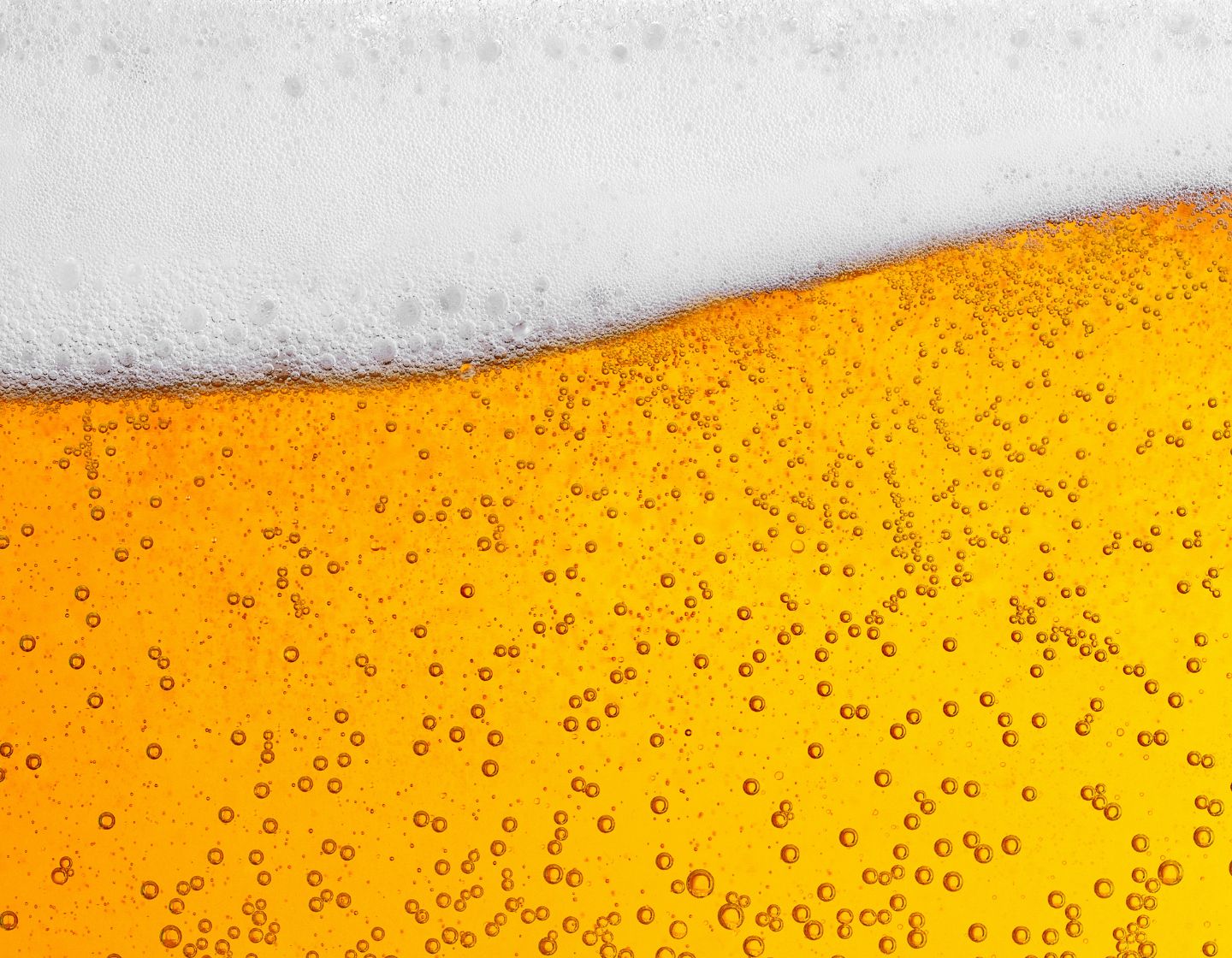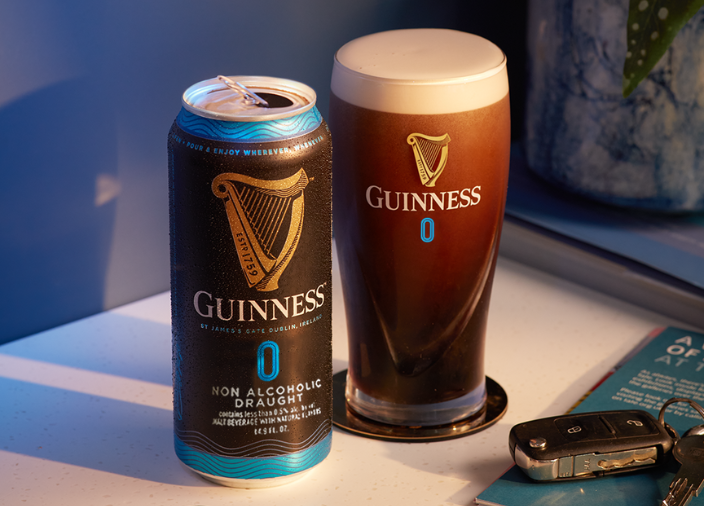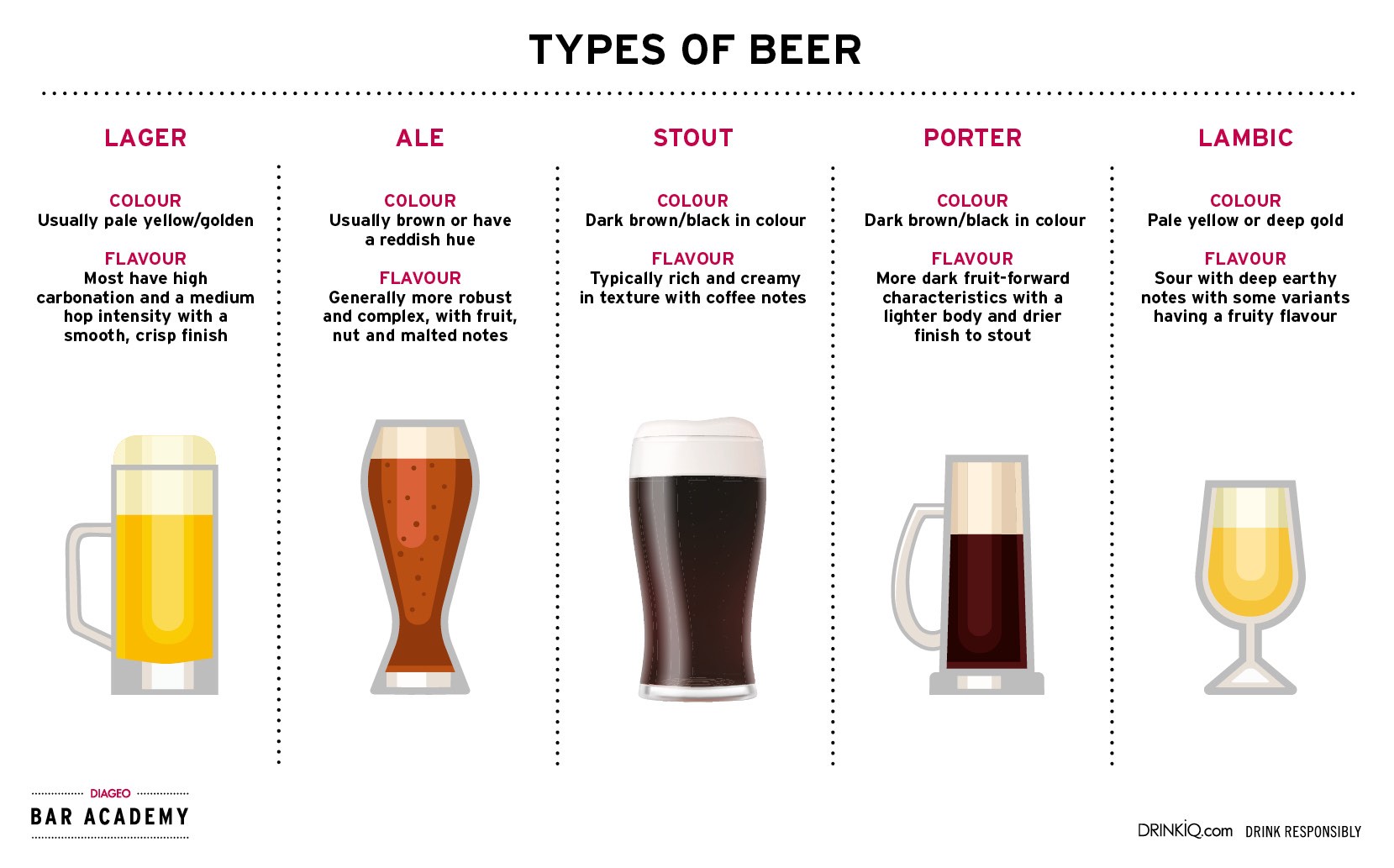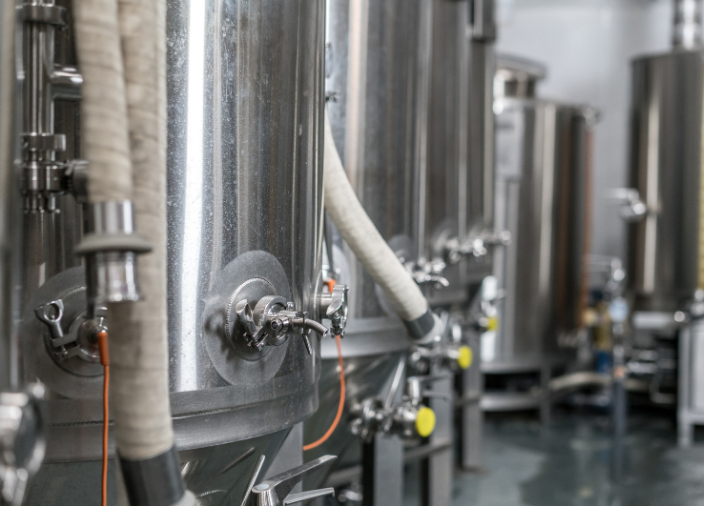
Beer: History and Production
Discover the history, types of beer, ingredients, production techniques, the perfect Guinness pour, and how to use beer in cocktails.
Estimated Reading Time: 5 Minutes
Beer has been enjoyed worldwide for thousands of years. Discover the history, types of beer, ingredients, production techniques, how to pour the perfect Guinness, and beer cocktail recipes to tickle your taste buds.
What is beer?
At its simplest, beer is an alcoholic beverage derived from grains, fermented by yeast, and the third most popular beverage in the world, following water and tea. And while we might think that beer is mostly a fizzy yellow carbonated beverage, there’s much more to the story.
The History of Beer
Beer, a staple of human culture for millennia, gained significant popularity during the Agricultural Revolution. In 7000 BC, Sumerians in Lower Mesopotamia recorded the oldest known written beer recipe. This included details on how to make a bread they called ‘bappir’, which was soaked in water and spontaneously fermented to produce ‘kas’ or beer.
Egypt's fertile valleys were utilized to build the first major economy around beer. It is believed that workers building the Pyramids were paid with up to four liters of beer per day.
Beer Comes to Europe
We can thank the Romans, their empire, and road building for helping spread beer across Europe, where beer production took hold in Europe in the following centuries. Brewers added various herbs and spices to improve the taste of their beers, and in 822AD a Benedictine monk recorded the first use of hops in a beer recipe. This became the standard to improve the taste and preserve the shelf life of the beer.
The Germans took their beer incredibly seriously, and in 1516 the state of Bavaria passed the Reinheitsgebot or Purity Order. This law stated the only ingredients for beer could be water, barley, and hops (yeast remained an unknown mystery element).
Beer Arrives in America
In 1620, beer production crossed the American continent, and breweries quickly emerged in colonial cities, offering similar beer styles to those in England. Brewers combined European techniques with New World grains such as barley malt, wheat, and corn and sometimes substituted sugar with molasses or pumpkin.
Technology Fuels Production
The Industrial Revolution in the late 18th century marked a significant advancement in beer production. Around this time, an innovative Irishman, Arthur Guinness, took a gamble adopting a new style of dark beer, porter, at his Dublin brewery, St. James's Gate, signing a historic 9,000-year lease.
How to Pour the Perfect Pint of Guinness
The Brewing Empires
It wasn't until 1883 that the first pure yeast strain was developed in Copenhagen, which helped to improve the consistency and quality of beers. During the 1900s, breweries became great empires of commerce throughout the United States and Europe, with Britain focusing on ales. Guinness became one of the biggest breweries in the world, exporting all over the globe, and even hired Guinness Travelers to report back on the quality of the beer where it was sold abroad, from places as far-reaching as Argentina to Malaysia.
Beer Today
Today, the beer industry is flourishing more than ever; over the past 30 years in particular, there has been a marked increase in breweries, production, and product experimentation. Global demand has resulted in significant numbers of new breweries and microbreweries blending new ingredients and techniques with inspirations from older styles to create their beers. Breweries are opening all over the globe, and after a period of consolidation in the US and Europe, Asia and Africa are now also showcasing beer creativity like never before.
Low & No Alcohol Beers

Low & No Alcohol Beers
There are many non-alcoholic beer options now, such as lagers, IPAs, and stouts. In fact, it took Guinness four years to perfect the flavor of Guinness 0.0. It features the same surge, settles, and creamy head on the beer and the same roast flavors and lingering bittersweet flavor, just without the alcohol.
Types of Beer
Lager (including Pilsners) - The most popular type of beer is lager, which originates from Germany and is stored at very cool temperatures for an extended period. It has a smooth, crisp finish, pale yellow/golden color, and medium hop intensity.
Ales - English breweries champion ale's robust and complex flavor, which features notes of fruit, nuts, and malt. These full-bodied beers are usually a reddish-brown hue. Pale Ale and IPAs, which rely on hops for piney, citrus aromas, and flavors, are also part of this category.
Stouts and Porters - Stouts are brewed with heavily roasted barley, resulting in a dark color and strong coffee, chocolate, and roasted flavors, along with a thicker and creamier mouthfeel. On the other hand, porters are made with a more diverse blend of malts, providing a lighter body, smoother mouthfeel, and milder roasted character.
Sour - Historically, this type of beer uses yeast that naturally occurs in the air, and they can generally taste quite sour. Sour beers have become a popular and refreshing style in recent years.

Myth Buster: The term "pale ale" refers to a lighter color. The term "pale" in "pale ale" historically referred to beers that were less hopped, not necessarily lighter in color. The name evolved over time to describe the beer's amber to copper hues.
Beer Production

Beer Production
Beer is made using four simple ingredients: malted barley (or other grains), hops, water, and yeast. Although the production process may differ between brands or styles, these four components remain consistent.
Watch this short video to understand the beer production process
Four Simple Ingredients
1. Barley or other grains
Barley contains the sugars or enzymes essential for brewing.
The selected grains are harvested and then subjected to steeping to initiate germination.
After the germinated grains are rested and dried, they are kilned to produce malted barley, which imparts color and flavor to beer.
2. Water
Makes up over 90% of an average beer.
The grain is mixed with water at the right temperature to activate enzymes in the barley and break down long chains of sugars into simple fermentable ones to start the brewing process.
The type of water and its natural mineral content affects the beer flavor, hence place-specific beer styles, including pilsners in the Czech Republic and ales in the UK.
3. Yeast
A single-celled fungus that consumes the sugars from the brewing process and converts them to alcohol and Co2.
Traditionally, brewing yeasts are split into two broad categories: ale and lager.
Ale yeasts give fruitier (esters) and phenolic flavors and tend to be top-fermenting, meaning the yeast ferments at a warmer temperature and rises to the top of the wort.
Lager yeast is bottom fermenting and works at a much lower temperature for more extended fermentation periods, delivering a crisper, cleaner finish.
Spontaneous fermentation or utilizing wild yeasts creates funky, fruity, musty, barnyard flavors and aromas but has less consistent fermentation profiles compared to lager and ale.
4. Hops
Hops are a vine-like plant native to many regions of the world.
The female plants produce small hop cones with lupulin, containing hop acids and essential oils, which impart aroma, balance beer flavor with bitterness, and act as a natural preservative.
Depending on when you use hops in the brewing process, they can impart flavor and bitterness for taste or deliver unique aromas in the finished product.
Fun Fact:
World Beer Day is celebrated on the first Friday of August each year. Many craft beer bars and pubs host beer-tasting events or even experiment with beer and food pairings, trying various beers with different dishes.
Beer Recipes
If your bar is celebrating World Beer Day read on for an Expert Guide To Beer Flavors & Styles.
For tips, trends, recipes and more, sign up the Diageo Bar Academy newsletter.
